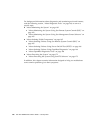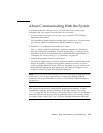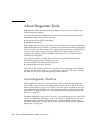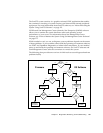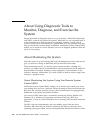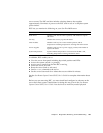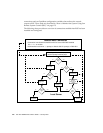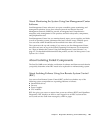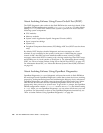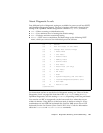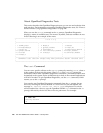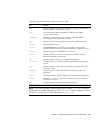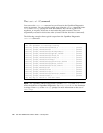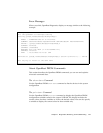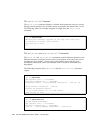
166 Sun Fire 280R Server Owner’s Guide • January 2001
About Isolating Failures Using Power-On Self-Test (POST)
The POST diagnostic code resides in the flash PROM on the main logic board. If the
OpenBoot PROM configuration variable diag-switch? is set to true (the default
setting is false), POST runs whenever the system is powered on. POST tests the
following system components:
■ CPU modules
■ Memory modules
■ System switch Application-Specific Integrated Circuits (ASICs)
■ Input/output host bridge
■ System bus
■ Peripheral Component Interconnect (PCI) Bridge ASIC bus (POST tests for shorts
only)
By default, POST displays detailed diagnostic and error messages on a local
terminal, if one is attached to the system’s serial port A. Redirecting the system
console to RSC after RSC has been installed enables remote viewing of POST
messages, either while POST is running or by viewing console logs after POST stops,
and disables use of a local console on serial port A. For information about running
POST, see “How to Isolate Failures Using Power-On Self-Test (POST)” on page 179.
For information about RSC, see “About the Remote System Control (RSC) Software”
on page 110.
About Isolating Failures Using OpenBoot Diagnostics
OpenBoot Diagnostics is a set of diagnostic self-tests that reside in flash PROM on
the main logic board. OpenBoot Diagnostics verifies that system devices are working
properly by testing internal registers and confirming the integrity of any subsystems.
OpenBoot Diagnostics can isolate errors in the main logic board and in any option
card that has an on-board self-test. OpenBoot Diagnostics can be run at the ok
prompt only after power-on or system reset. To get to the ok prompt, the OpenBoot
PROM configuration variable auto-boot? must be set to false (the default setting
is true). When you run OpenBoot Diagnostics you can select which tests you want
to perform. For instructions on how to run OpenBoot Diagnostics interactively, see
“How to Isolate Failures Using OpenBoot Diagnostics” on page 181.



